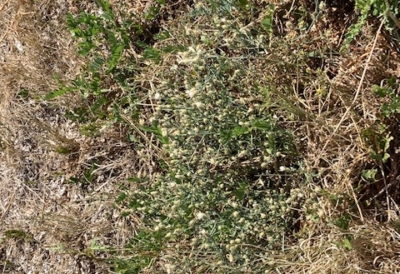Looking for spotted nowxious weed control service, call SprayTech at (720)248-0000. Serving Sedalia and Douglas county.
Spotted knapweed isn’t as problematic as diffuse knapweed in Colorado, but it does grow rapidly. It’s important to take steps to protect the area as much as possible. That means controlling the weed.
The good news is spotted knapweed control is possible through a variety of methods. The control process is very similar to diffuse knapweed, and you’re going to start with herbicides. You’ll need
Chemical Control with Herbicides
There are a few herbicides that you can use to help keep spotted knapweed under control. You’ll need to get the timing right for each of them. You can use:
• Tordon
• Milestone
• Transline
• Curtail
• Banvel, Vanquish, or Clarity
You want to spray in the spring for each of the herbicides. With Tordon and Milestone, you need to spray at rosette to mid-bolt grown stage. With the others, it’s best to get it in the early bud stage, but you can also use when all shoots have emerged.
The fall is also a good time to spray
Tordon can take around two to three years to see effectiveness, but the knapweed will reinvade if you don’t use other management control. The others are effective, but the time frame differs. You’ll need to be consistent and use with one of the other two options for control.
Cultural Control with Desirable Plants
When you’ve sprayed the area with herbicides, you’ll need to focus on cultural control. This involves the use of desirable plants that will compete with the knapweed for nutrients. Look out for herbicides that aren’t going to do harm to the desirable plants.
You should also look at using irrigation to help stimulation grass competition. However, rangelands and pastures often end up degraded, which is why the weeds grow and spread so quickly. Herbicides won’t help to restore the land, so you need to seed perennial grasses and shrubs.
Biological Control for Some Lands
While insects are still being evaluation, some are showing benefits of controlling knapweed. Seedhead flies have shown that they can cause plants to produce fewer viable seeds to slow down the spread. You also want to encourage more root-feeding insects in the area to get to the literal root of the problem. Diffuse knapweed root beetle and yellow-winged knapweed moth have both shown positive effects.
You can also use livestock to help. Sheep, goats, and cattle will eat anything they find, including spotted knapweed. It’s not dangerous for them, and it can help to reduce the spread by as much as 50% during the seed setting stage. You don’t even need them to graze for long. Two, 10-day intervals when the knapweed is around 6-12in tall is enough to help reduce the spread.
Herbicide is the first step. From there, you’ll want to use another method of control to keep spotted knapweed at bay.
For help with noxious spotted weed control in Sedalia, Larkspur, Franktown, Castle Rock, Castle Pines, Monument, contact us now.

